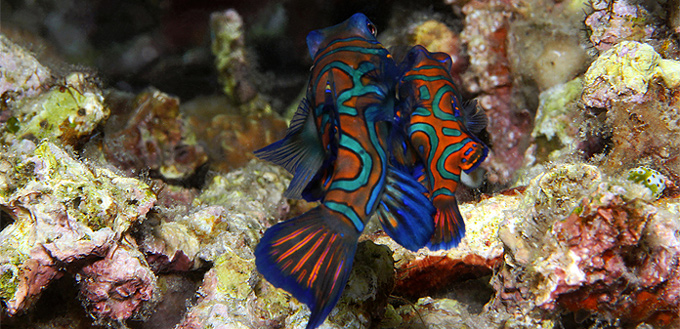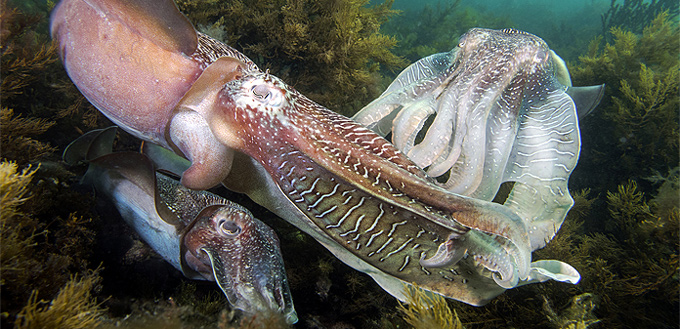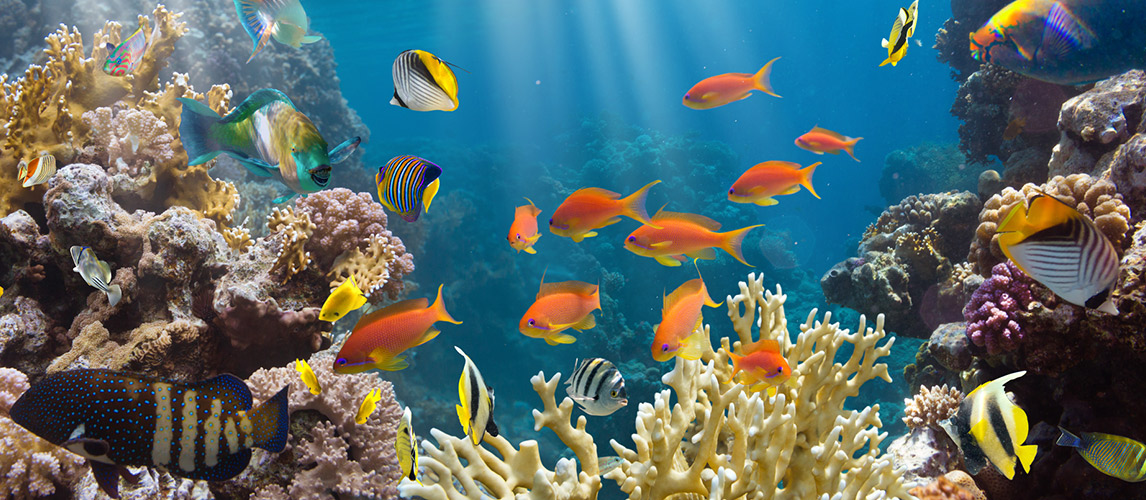A fish is a cold-blooded creature that inhabits fresh and seawater bodies all over the world. There are hundreds of types of fishes in the world, and each fish lives in the region to which it is best adapted.
Regardless of their different varieties, all fishes share two common traits. One, they are vertebrates, which means, they all have a backbone. Any water creature that doesn’t have a backbone does not belong to the family of fishes. The other trait is that they are purely aquatic, which means, they live only in water and cannot survive on land.

Other than these traits, the rest are vastly different and varies from fish to fish. Some fish like salmon have gills, eels are warm-blooded, sharks give birth to young and more. The variations are countless, and there are many ways in which they mate and reproduce too.
In fact, there are quite a few ways in which fishes mate and reproduce.
Reproduction Age
Some fish start reproducing immediately after they are born while others take many years to mature and to start reproduction. In general though, the smaller the size of the fish, the sooner they are ready to mate and reproduce. Research shows that size is a major determinant of mating.
Depending on their size and age, different species mate in different ways. Let’s look at some of these interesting ways of mating and reproducing.
Livebearing
In this type of mating, the female is impregnated by one of the male’s dorsal fins. Sperm is released from the fin and this enters the female fish’s body. Within one month, the female will release a hatched fish, that’s also called as larval fish or fry.
These young larval fish are fully formed and are ready to swim from the time they are hatched. Immediately, they start looking for food as it is required for survival. In this sense, it is survival of the fittest from the moment these fishes are hatched and they enter the waters.
As for the mother fish, she can continue to release a larval fish once every month for the rest of her life, without the presence of a male! Thus, in this kind of mating, the male fish’s presence is required only one time and after that, the female is independent enough to continue reproducing on her own.
Egg Laying
In species like clown fish, both the partners are involved in mating and hatching. Typically, the female lays a few eggs at a time. After that, both the fishes are equally involved in the fertilizing and hatching process.
In the egg scatters category, the female fish moves around scattering her eggs while the male follows close behind to fertilize each egg. Both these parents do not even stop to feed until all the eggs are hatched. In substrate spawners, the female lays eggs and uses her saliva to attach it to a surface. The male follows and fertilizes the eggs. Catfish reproduces in this manner.
Some fishes fertilize in a weird manner. The bubblenest builders, for example, have an interesting way to mate. The male blows bubbles and the female lays her eggs in this bubble. These bubbles are blown at a place where there is maximum oxygen and a food source, to increase the rate of survival of the offspring. After hatching, both the parents take care of the young ones.
In the mouthbrooders category, the female lays eggs and the males fertilize them. Then, one of the fishes collects all the eggs and keeps them in its mouth till they are hatched. Some examples of mouthbrooders are Arowana, cardinal fish, sea catfish and jaw fish.
Though the location of eggs and the way they are hatched varies, the mating process is the same. The female lays the eggs and the male fertilizes it outside the body of the female.
Unisexual
Some species of fishes reproduce by themselves without the help of another partner. All these fishes are females and they give birth only to females. There is no need for the presence of a male. This is an interesting form of reproduction, though we can’t call it mating, because it goes to show that the role of a sperm is completely absent in the reproduction process.
Sometimes, the females though may mate with male fishes of a different species (closely related), but the sperms are not used for reproduction.
Hermaphrodites
Another interesting type of mating is when both the male and female sexual organs are present in the same fish. A good example of hermaphroditic fish is the clown fish.
There are two types of hermaphrodites. In the first category, the male and female mate , reproduce and lay eggs. But, here is the catch! A fish can change its sexuality at any time. For example, a fish can be born as a male and a few years later, it can become a female. This is called sequential hermaphroditism.
When the male switches to a female, the process is called protandry and when a female changes into a male, it is called protogyny. However, every fish needs a partner to mate and spawn eggs.
Clown fish is a classic example of this form of hermaphroditism. Any group of clown fish will contain two large fishes, one male and the other female. The rest are all small fishes that are all males. These fishes live in between sea anemones. When the female fish leaves the group, her partner changes to a female and the next largest fish increases in size to become the new female’s partner.
In another species called Indo-Pacific cleaner wrasse, there is only one male fish while the rest are all females. When the male fish leaves or is killed, the female becomes a male and the next largest fish grows to become a mating partner.
The other kind of hermaphroditism is called simultaneous hermaphroditism. As the name suggests, the same species has both male and female sex organs. Self fertilization happens in some species and the eggs remain in the adult’s body till they are ready to hatch and emerge on their own. The adult protects its young ones until they grow old enough to take care of themselves. These young fishes also have both male and female sex organs and they continue the process. These creatures do not require another creature to mate and in this sense, they are similar to unisexuals, but they contain both the sex organs.
In other examples of simultaneous hermaphroditism, one creature can act as both the male and the female. Slugs, for example, belong to this category. At one point, a creature can exhibit its male or female sex organ and the other slug displays the opposite one. So, these two mate and produce offspring. This is similar to the normal mating process prevalent in other creatures, except that the fish can be either a male or a female.
Locking in
Some fishes are thankfully like humans! They embrace each other for a few seconds, during which time, the sperm from the male enters the female and fertilizes the eggs within her. After a period of seven to ten days, the female fish will lay the eggs and invariably, she is the one who protects the hatchlings till they are independent enough to survive by themselves.
Broadcast Spawners
In this type of mating, the female will release her eggs and the male fish will release his sperms in the water. Both these fishes release their respective eggs and sperm in close vicinity, but fertilization happens only by chance. Not all eggs are fertilized by the sperm.
The fry (young fish) that emerge from this type of breeding is resilient, strong and is well-adapted to survive from the first second. This is because none of the parents are around to protect the fish from dangers.
This type of breeding is also called mass spawning or synchronous spawning. Some examples of fishes that mate and reproduce in this way are jellyfish, sea anemones, clams and fan worms.
In short, it is interesting to know the different types of mating process in fishes. However, understanding this difference and knowing which fish species mates in which way is important, especially if you plan to have an aquarium.

It is absolutely important to learn to identify male fishes from the female ones of the same species. Also, this male and female should be put together only when they are ready to mate and not before that, as one fish could end up eating the other.
Likewise, you should know when to remove the fishes after they lay eggs. Do you have to remove them right away, so they don’t eating the eggs or should they be removed after the fertilization? Will the parents take care of the fry? Understanding all these aspects is important for breeding fish and for keeping them in an aquarium.
Nevertheless, the breeding patterns are interesting and throws much light on the evolution process as well.
Related Post: Best Aquarium





